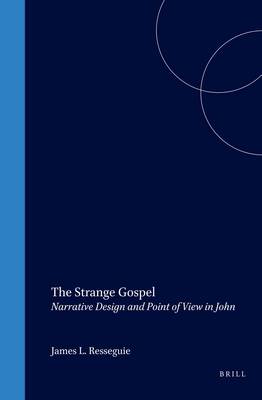
- Afhalen na 1 uur in een winkel met voorraad
- Gratis thuislevering in België vanaf € 30
- Ruim aanbod met 7 miljoen producten
- Afhalen na 1 uur in een winkel met voorraad
- Gratis thuislevering in België vanaf € 30
- Ruim aanbod met 7 miljoen producten
Zoeken
€ 267,45
+ 534 punten
Omschrijving
In this literary analysis of the Gospel of John, Resseguie examines rhetoric, setting, character, and plot to uncover the Gospel's unique point of view. He shows the usefulness of the concepts of defamiliarization and point of view for understanding how the narrator makes the familiar seem strange. A material, familiar point of view that is voiced by the dominant culture is compared with a defamiliarized, strange point of view that is expressed by Jesus and the disenfranchised. Through close readings of narrative texts, the author develops and elaborates the theological perspective of John, which emerges in the clash of differing points of view.
The introduction defines "objective" and "subjective" point of view, and shows the value of the works of Boris Uspensky and Susan Sniader Lanser for understanding the Gospel of John. In chapter one, irony, misunderstandings, and double entendres are shown to be important rhetorical tools in the Gospel's attempt to make the familiar seem strange. Chapter two discusses point of view as it is expressed in architectural settings (sheepfold, garden, courtyard, praetorium, well, temple, and tomb) and in topographical settings (sea, mountain). Chapter three highlights the distinct points of view of Jesus, Nicodemus, religious authorities, the world, the royal official, the man at the pool, the man born blind, Mary Magdalene, Simon Peter, the beloved disciple, and Judas. Chapter four discusses the point of view that emerges from an analysis of the plot. The final chapter is a summary of the narrative's singular point of view.
This work is a suitable introduction to a literary analysis of the Gospel of John. It makes an important contribution to narrative criticism on the Fourth Gospel in particular, and to our understanding of defamiliarization and point of view in general. The book confronts head-on habitualized and familiar ways of thinking in the ancient world and today.
The introduction defines "objective" and "subjective" point of view, and shows the value of the works of Boris Uspensky and Susan Sniader Lanser for understanding the Gospel of John. In chapter one, irony, misunderstandings, and double entendres are shown to be important rhetorical tools in the Gospel's attempt to make the familiar seem strange. Chapter two discusses point of view as it is expressed in architectural settings (sheepfold, garden, courtyard, praetorium, well, temple, and tomb) and in topographical settings (sea, mountain). Chapter three highlights the distinct points of view of Jesus, Nicodemus, religious authorities, the world, the royal official, the man at the pool, the man born blind, Mary Magdalene, Simon Peter, the beloved disciple, and Judas. Chapter four discusses the point of view that emerges from an analysis of the plot. The final chapter is a summary of the narrative's singular point of view.
This work is a suitable introduction to a literary analysis of the Gospel of John. It makes an important contribution to narrative criticism on the Fourth Gospel in particular, and to our understanding of defamiliarization and point of view in general. The book confronts head-on habitualized and familiar ways of thinking in the ancient world and today.
Specificaties
Betrokkenen
- Auteur(s):
- Uitgeverij:
Inhoud
- Aantal bladzijden:
- 240
- Taal:
- Engels
- Reeks:
- Reeksnummer:
- nr. 56
Eigenschappen
- Productcode (EAN):
- 9789004122062
- Verschijningsdatum:
- 28/06/2001
- Uitvoering:
- Hardcover
- Formaat:
- Genaaid
- Afmetingen:
- 165 mm x 242 mm
- Gewicht:
- 566 g

Alleen bij Standaard Boekhandel
+ 534 punten op je klantenkaart van Standaard Boekhandel
Beoordelingen
We publiceren alleen reviews die voldoen aan de voorwaarden voor reviews. Bekijk onze voorwaarden voor reviews.








